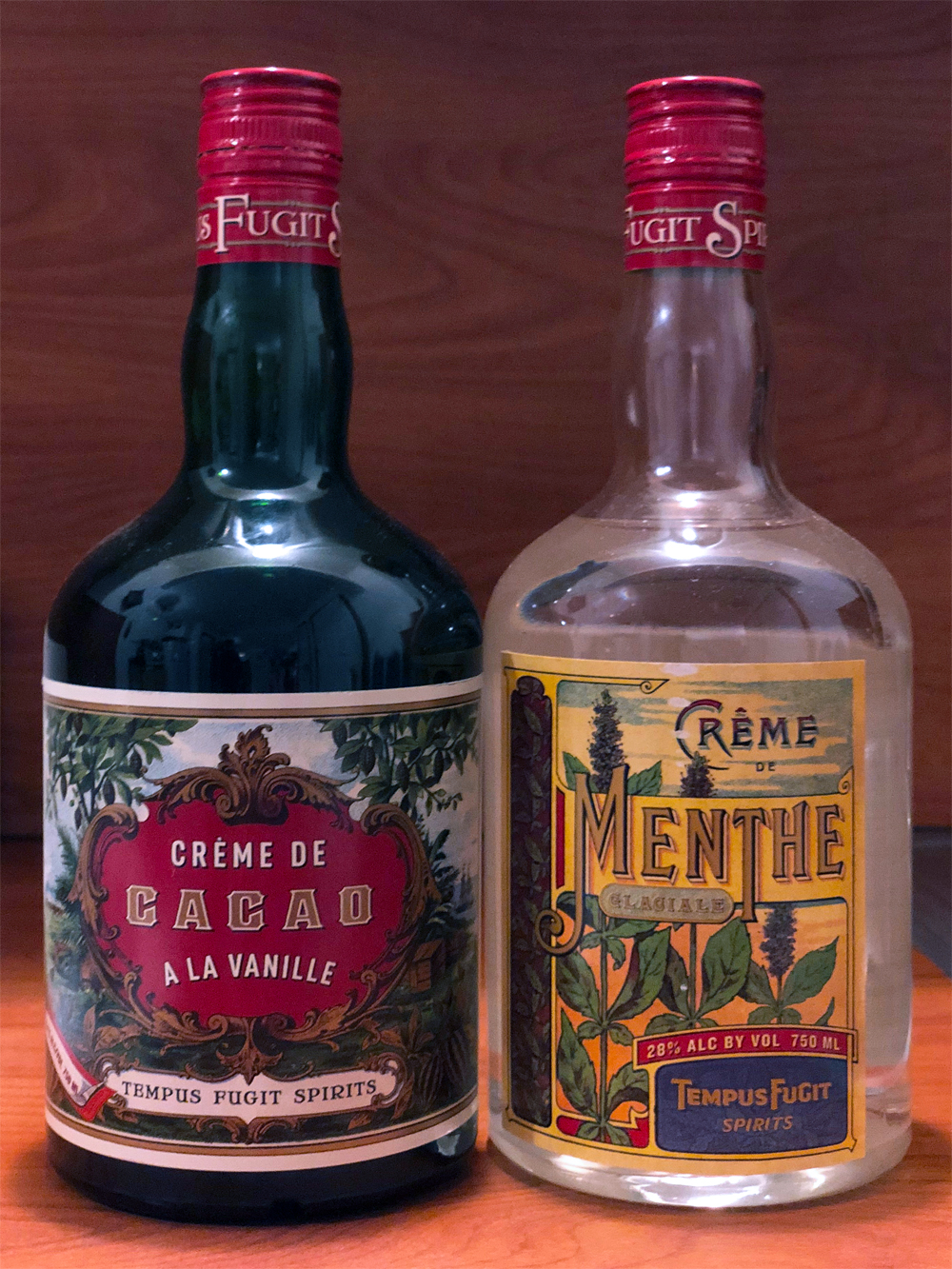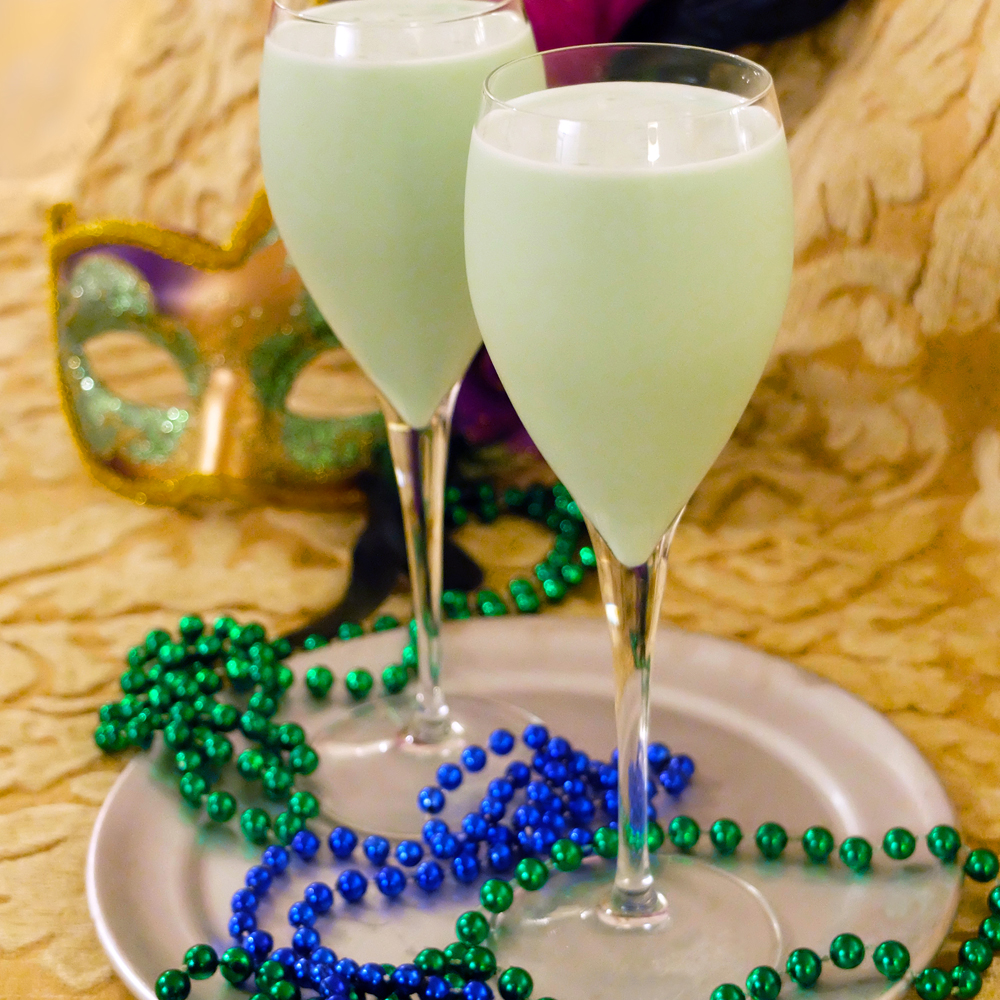For some, “Mardi Gras” is the clarion call of Bacchanalian excess in the Big Easy. For others, it’s a mere blip of purple, gold, and green offerings spotted at major retailers sometime after New Year’s and before Valentine’s.
 |
| A hint of Mardi Gras festooning a balcony on Decatur St. |
Although not a religious holiday in itself, Mardi Gras always falls on the Tuesday before the Christian observance of Ash Wednesday. Referred to as “Shrove Tuesday” in the medieval era, this particular Tuesday was set aside for mandatory confession of one's sins, not spectacles of public decadence.
The name Mardi Gras (French for “Fat Tuesday”) references a Christian tradition of indulging in rich foods before Lent. Those festive roots can be tentatively traced back to the Boeuf Gras (Fatted Calf) celebrations of 17th century France, where a prized yearling steer was adorned with ribbons, then paraded through the town as a representation of the last decadent meal eaten before Lent’s belt-tightening. Picturing this, one cannot help but think of the famed Bourbon Street Mardi Gras celebrations held annually in New Orleans.
The seeds of today’s Mardi Gras were planted in Louisiana on a Shrove Tuesday. Stopping for rest on March 2, 1699, French-Canadian explorer Jean Baptiste LeMoyne de Bienville and his crew named their encampment on the Mississippi river Pointe du Mardi Gras in honor of the day of discovery. Established in 1718 by Bienville, New Orleans hosted its first Mardi Gras celebration sometime in the 1730s, and it’s been an evolving procession of parades, costumes, masked balls, music, dancing, and other forms of elaborate extravagance ever since.
New Orleans is also home to a quieter type of extravagance. Just beyond Bourbon Street in the Old Butcher’s area of the French Market, happy tipplers in the know sip a decadent, pastel green-colored, chocolate-mint drink at Tujague’s on Decatur Street. Consisting of equal parts of crème de cacao, crème de menthe, and cream, and shaken with cracked ice, the Grasshopper is just sweet enough to serve as a mid-afternoon pick-me-up, and lively enough to merit a second round.
 |
| Founded in 1856, Tujague’s Bar and Restaurant is New Orleans’ second oldest continuously-operating restaurant. Antoine’s, which opened in 1840, is the oldest. |
The efficacy of anecdotal information being what it is, the Grasshopper reputedly originated at this landmark bar sometime before (during, or after) Prohibition. Accounts differ as to which masterful hand behind Tujague’s bar created the creamy drink. Many credit Philibert Guichet as the creator, but it turns out that his younger brother Philip John Guichet worked at Tujague’s, not Philibert.
Philip was employed at Tujague’s beginning in 1910, later becoming co-owner with Jean-Dominic Castet (formerly of Madame Bégué‘s) sometime around 1920, then sole owner from 1962 until his death in 1975. In his obituary printed in The Times-Picayune on May 17, 1975, it is reported that “In 1928-30, he won the New York contest for cocktail mixing with his ‘Grasshopper’ creation.” Unfortunately, obituaries are notoriously rife with embellishments, omissions, and misapprehensions included by error or intent. No credible source reporting on this particular contest (never mind whether he won or merely placed) has been located to date.
Regardless, the Tujague’s Grasshopper has a flavor ancestor, and that can be found in Boothby's 1908 World Famous Drinks and How to Mix Them.
Also named “Grasshopper”, this pousse-café style drink made with equal parts crème de cacao and green crème de menthe is credited to “Harry O'Brien, late of The Palace Hotel, San Francisco”. A pousse-café (literally translated as “coffee-pusher”) was a popular 19th century layered tipple meant to be drunk immediately after coffee. It even had its own glassware—a narrow, stemmed, sherry-type glass holding a mere 1 1/2 ounces—which displayed the layered liqueur to great effect.
Our unapologetic confession is this: we prefer Tujague’s over all other formulations, and we are especially enamoured of bartender Paul Gustings’ brandy-tempered version served lately at Tujague’s. However, we favor a longer pour and a bit more brandy, and we’ve adjusted the proportions for our taste.
Tracking down the liqueurs is a fairly easy task (sometimes as simple as reaching into the back of your liquor cabinet), but if the cupboard is bare, spring for the outstanding products by Tempus Fugit. Their crème de cacao is the benchmark chocolate liqueur; sweetened with natural cane sugar, their crème de menthe is sweet, viscous, and minty.
The Tempus Fugit crème de menthe is a natural pale amber. For the Grasshopper’s iconic pale green hue, we simply add a few drops of food coloring along with the rest of the ingredients, then proceed as directed.
Channel the Mardi Gras spirit without the trouble of travel arrangements and crowded streets: start up some rollicking brass band tunes, toss a few bead strands on the table, pour the drinks, and let the good times roll!
A Grasshopper for Two
Serves 2
Supermarket heavyweight McCormick’s food coloring is readily available. Four drops gives this drink a pleasing pale green color, but add up to ten drops total for a deeper pale green. Food coloring can impart a bitter, off-putting taste, so be cautious when using other brands.
Shake ingredients with ice; strain into two chilled 6-ounce champagne flutes or stemmed tulip glasses.
- 4 ounces light (or heavy) cream
- 3 ounces crème de cacao
- 1 1/2 ounces crème de menthe
- 2 ounces brandy (Hennessy is our choice)
- 4 drops green food coloring, optional



